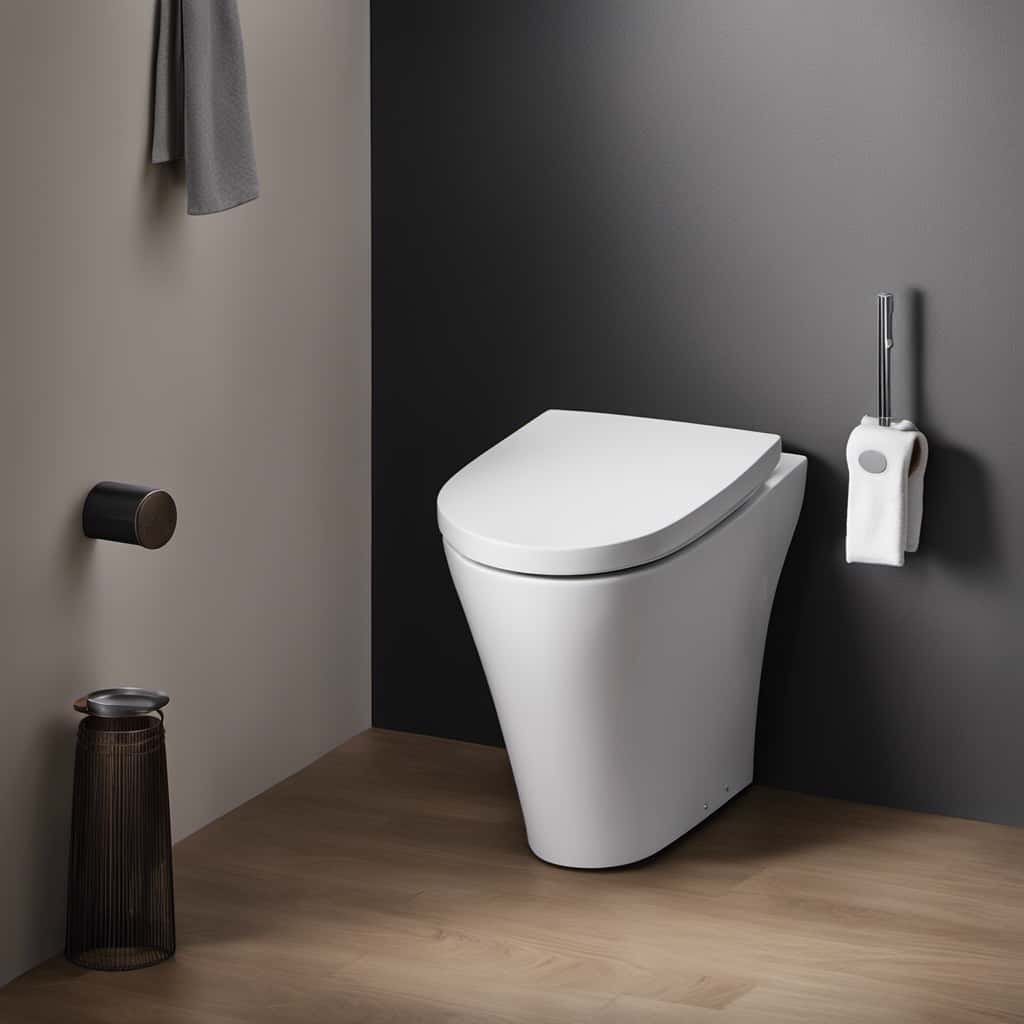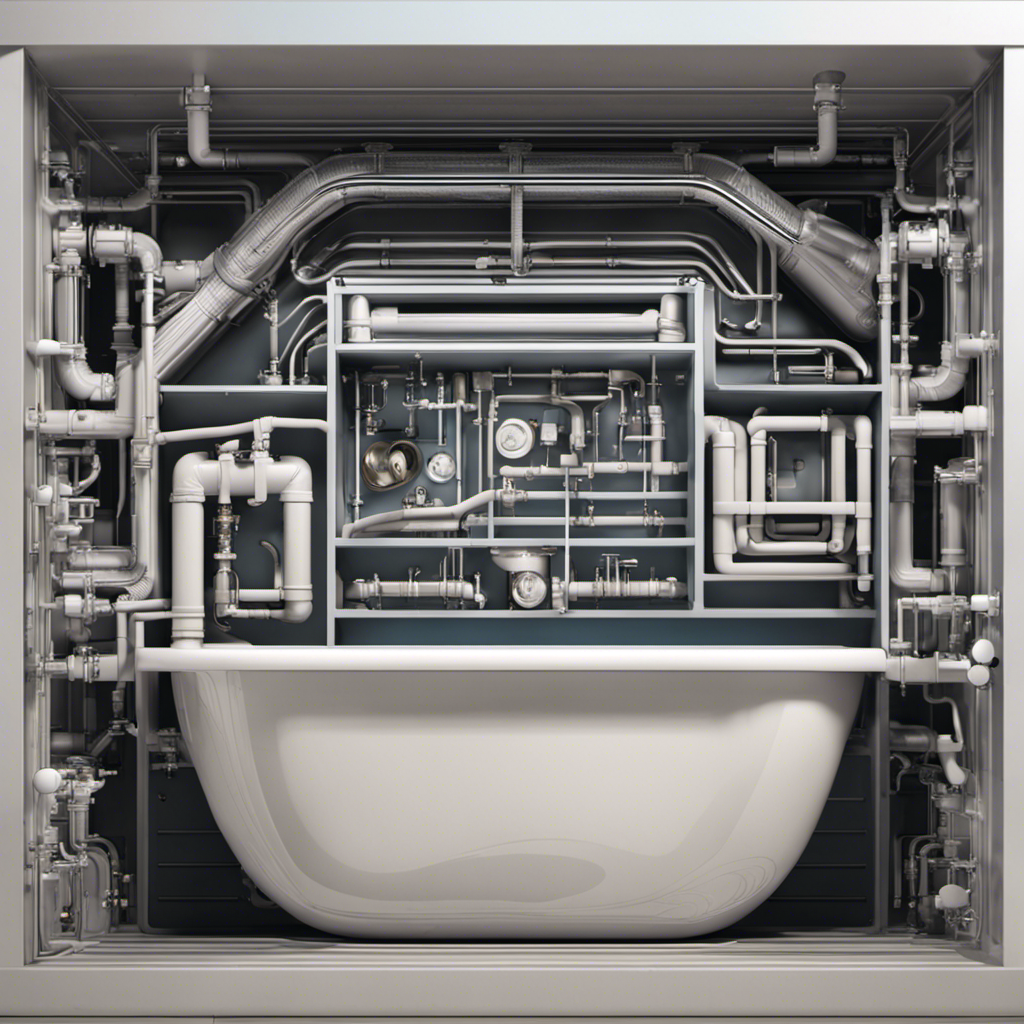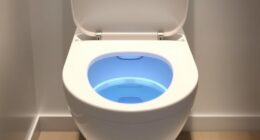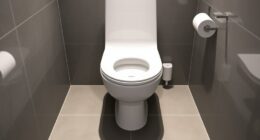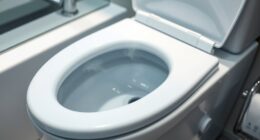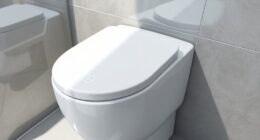We’ve all found ourselves ankle-deep in water, puzzled over why our drain is blocked once more.
Did you know that hair products are often the culprits behind these frustrating clogs? In fact, they can build up in your pipes over time, causing slow drains and even backups.
But fear not! In this article, we’ll dive into the science of how hair products clog drains and provide you with effective tips to prevent and unclog those stubborn clogs.
Key Takeaways
- Hair products, especially those with chemical ingredients like silicone and oils, can accumulate in drains and cling to pipe walls, leading to clogs.
- Residues from hair products create a sticky layer that traps other debris, causing stubborn clogs and frequent plumbing issues.
- Hair product build-up can result in slow drainage, blockages, foul odors, water overflow, and potential water damage.
- Preventive measures such as using a drain strainer, being mindful of the amount of hair product used, and opting for lightweight gels or mousses can help prevent clogs. Additionally, methods like pouring boiling water, using a baking soda and vinegar mixture, plunging, or using a drain snake can be effective in unclogging drains from hair products.
Common Culprits for Drain Clogs
When it comes to common culprits for drain clogs, one of the biggest offenders is hair products. Chemical ingredients found in these products can accumulate in drains over time, leading to blockages and restricted water flow.

Many hair products contain substances like silicone, oils, and polymers that can cling to the insides of pipes, attracting other debris and causing stubborn clogs.
To prevent this issue, it’s important to be mindful of the types of hair products being used and their potential impact on drains. Consider opting for environmentally friendly alternatives that are formulated with natural ingredients and biodegradable substances.
These alternatives can help minimize the build-up of residue in drains, promoting better drainage and reducing the risk of clogs.
Understanding How Hair Products Clog Drains
To understand how hair products clog drains, let’s delve into the chemical composition of these products and their interaction with plumbing systems.

Hair product ingredients play a significant role in their impact on the environment and the potential for drain clogs. Many hair products contain substances such as oils, silicones, and polymers that can easily adhere to the sides of pipes. Over time, these residues can accumulate and form a sticky layer that traps other debris, leading to clogs.
Additionally, some hair products contain microbeads or microplastics that aren’t biodegradable and can further contribute to environmental pollution.
It’s essential to be mindful of the ingredients in our hair products to minimize their impact on both our drains and the environment.
The Consequences of Hair Product Build-up
As we continue our discussion on the impact of hair product build-up, it becomes evident that the consequences of this accumulation can be quite significant. Hair product residue can have a detrimental effect on plumbing systems, leading to potential damage on drains.

Here are four key consequences of hair product build-up:
- Blocked drains: The accumulation of hair product residue can cause drains to become clogged, leading to slow drainage or complete blockage.
- Increased plumbing maintenance: Hair product build-up can result in frequent plumbing issues, requiring costly repairs and maintenance.
- Unpleasant odors: As hair product residue decomposes, it can emit foul odors, creating an unpleasant environment in your bathroom.
- Potential water damage: Blocked drains can cause water to back up, leading to overflow and potential water damage in your home.
Understanding these consequences highlights the importance of preventing hair product drain clogs.
Tips for Preventing Hair Product Drain Clogs
To prevent hair product drain clogs, we recommend using a drain strainer. A drain strainer is a simple and effective tool that catches hair and prevents it from going down the drain. By using a drain strainer, you can significantly reduce the amount of hair that accumulates in your pipes and prevent clogs from occurring.
In addition to using a drain strainer, there are other steps you can take to prevent hair product drain clogs. First, be mindful of the amount of hair product you use. Using excessive amounts of product can lead to build-up in your pipes and increase the risk of clogs.
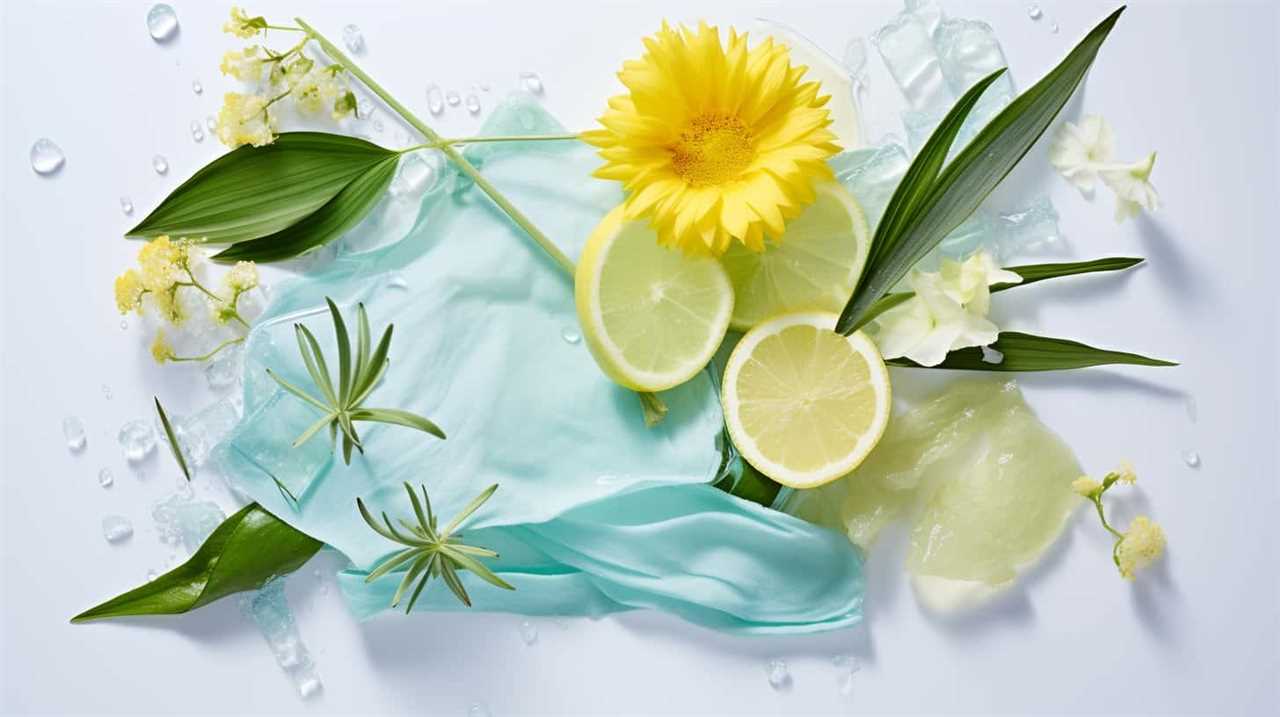
Second, consider using hair products that are less likely to cause build-up, such as lightweight gels or mousses.
Finally, make sure to clean your drain strainer regularly to maintain its effectiveness.
Effective Ways to Unclog Your Drain From Hair Products
Now let’s delve into the topic of effectively unclogging your drain from hair products, by continuing the discussion from the previous subtopic and addressing the issue head-on. When faced with a clogged drain caused by hair products, there are several drain cleaning methods you can try before resorting to professional drain unclogging services.
Here are four effective ways to unclog your drain from hair products:

- Boiling water: Start by pouring boiling water down the drain to dissolve any buildup of hair product residue.
- Baking soda and vinegar: Mix equal parts baking soda and vinegar and pour it down the drain. Let it sit for about 30 minutes, then flush with hot water.
- Plunger: Use a plunger to create suction and dislodge the clog. Make sure to cover the overflow drain before plunging.
- Drain snake: Insert a drain snake into the drain and rotate it to catch and remove the hair clog.
Frequently Asked Questions
Are All Hair Products Equally Likely to Clog Drains, or Are There Certain Types That Are More Prone to Causing Clogs?
Certain types of hair products, due to common ingredients, are more likely to clog drains. Build up from these products can have a negative environmental impact. It is important to be mindful of proper drain maintenance to avoid clogs.
Can Using a Hair Strainer or Drain Screen Really Prevent Hair Product Clogs, or Are There Other Factors to Consider?
Using a hair strainer or drain screen can be effective in preventing clogs caused by hair products. However, it’s important to consider other factors such as excessive product usage and buildup of residue.
Is There a Specific Type of Drain Cleaner That Is More Effective in Removing Hair Product Build-Up From Drains?
The best drain cleaners for hair product build up are those specifically formulated to dissolve common ingredients in hair products that cause drain clogs. These cleaners are effective in removing build-up and restoring proper drainage.
What Are Some Alternative Methods to Unclog Drains From Hair Products, in Case the Recommended Methods Are Not Available?
If the recommended methods aren’t available, there are alternative methods for unclogging drains from hair products. Emergency drain unclogging techniques, like using a plunger or a drain snake, can be effective.

How Often Should Drains Be Cleaned to Prevent Hair Product Build-Up and Potential Clogs?
To prevent hair product build-up and potential clogs, it is important to clean drains regularly. Regular cleaning helps maintain a clean and free flowing drain. Here are some tips for maintaining a clean and free flowing drain.
Conclusion
In conclusion, it’s important to be mindful of the hair products we use and their potential to clog drains. By understanding the common culprits and consequences of hair product build-up, we can take proactive measures to prevent drain clogs.
Regular maintenance and the use of effective unclogging methods can help keep our drains flowing smoothly. Remember, an ounce of prevention is worth a pound of cure when it comes to hair product drain clogs.

